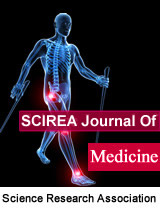Nanotechnolgical Investigations in to Ayurvedic Rasa-Shastra based medicines - Special reference to Mahayogaraj guggulu
DOI: 237 Downloads 10005 Views
Author(s)
Abstract
Ayurveda is the science made up of Ayush (life) and Veda (knowledge), leading to knowledge of life. It is common knowledge that in Indian subcontinent since 7th century A.D., ayurvedic system adopted a holistic approach towards health care by balancing the physical, mental and spiritual functions of the human body. Rasa-Shastra (vedic-chemistry) is one of the mainstay of Ayurveda, which deals with herbo-mineral/metals/non-metals preparations called Bhasmas. The Bhasmas have been accepted in Indian system since ages through Ayurveda or Siddha system of medicine. Bhasmas or such preparations are extremely fine powders coated with herbal extracts.
Keywords
Arthritis; Evaluation; Tenderness; Chronicity
Cite this paper
Naveen K Navani, Rakesh Aggarwal,
Nanotechnolgical Investigations in to Ayurvedic Rasa-Shastra based medicines - Special reference to Mahayogaraj guggulu
, SCIREA Journal of Medicine.
Volume 3, Issue 2, April 2019 | PP. 14-16.
References
| [ 1 ] | Saper RB, Phillips RS, Sehgal A, Khouri N, Davis RB, Paquin J, Thuppil V, Kales SN (2008) Lead, mercury, and arsenic in US- and Indian-manufactured Ayurvedic medicines sold via the Internet. JAMA. 2008 Aug 27; 300(8):915-23. |
| [ 2 ] | Iris K, Maeve M, Kim H, Jie S, William R. C, Robert B. S, Kenneth J. R (2011) Bioaccessibility of lead and arsenic in traditional Indian medicines. Sci Total Environ. 409(21): 4545–4552. |
| [ 3 ] | Paramesh R L, Tarun K S, Piyush K, Priyanka V, Sitaramanjaneya M T, Neha B, Ranjana P, Naveen K Navani ( 2015) Facile biofunctionalization of silver nanoparticles for enhanced antibacterial properties, endotoxin removal, and biofilm control. Int J Nanomedicine. 10: 2155–2171. |
| [ 4 ] | Kumar P, Lambadi PR, Navani NK. (2015) Non-enzymatic detection of urea using unmodified gold nanoparticles based aptasensor. Biosens Bioelectron. ;72:340-7. |
| [ 5 ] | Patil SD, Sharma R, Bhattacharyya T, Kumar P, Gupta M, Chaddha BS, Navani NK, Pathania R. (2015) Antibacterial potential of a small peptide from Bacillus sp. RPT-0001 and its capping for green synthesis of silver nanoparticles. J Microbiol. 53(9):643-52. |

